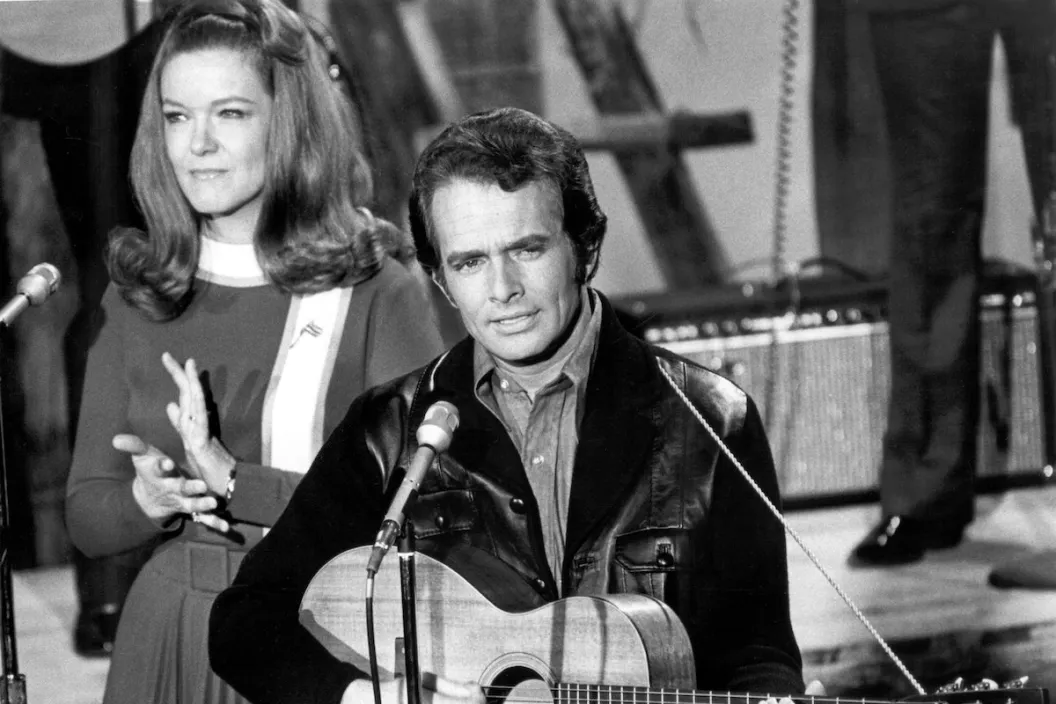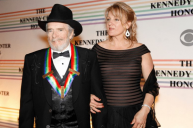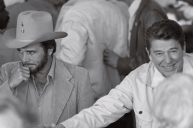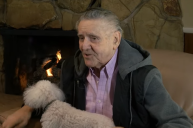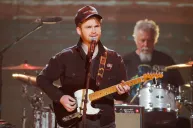For examples of how Bonnie Owens shaped not just the Bakersfield Sound but country music as a whole, look no further than the positive impact she had on the songs, recordings and stage performances of Merle Haggard.
Videos by Wide Open Country
Throughout her marriage to Haggard (1965-1978), Owens jotted down —and helped smooth out— early drafts for an untold number of seminal songs.
"If Merle had an idea for a song, she'd grab a legal-sized letter pad and start writing down the lyrics," Marc Eliot, writer of The Hag: The Life, Times and Music of Merle Haggard, told Wide Open Country. "When he worked out the chords for a song, she'd chord the lyrics so that they wouldn't forget them. That was invaluable to Merle because he wasn't that good of a reader. He didn't write that well. He never went to school."
"Merle has said there are several songs that would never have been recorded if it had not been for Bonnie," added Theresa Spanke, a California country artist and friend of Owens. "He would be talking and she would say, 'That would make a great song.' Then she would write it down for them to work on later. Merle even tells a story about the song 'Today I Started Loving You Again' being born exactly that way. They obviously made a great team. But, as amazing as Merle was, I have to wonder if he would have been quite as successful without her."
Haggard and Owens shared songwriting credits for "Today I Started Loving You Again." The B-side of Haggard's 1968 No. 1 "The Legend of Bonnie and Clyde" got covered over the years by no fewer than 150 artists, from fellow country legends (namely George Jones and Marty Robbins) to an impressive range of pop, soul and blues vocalists.
"The way he told the story was she inspired him to write it and as usual was there to help him write it down," said David Cantwell, author of The Running Kind: Listening to Merle Haggard. "He sent her out for hamburgers, and when she came back, he began to sing it to her and she wrote it down on the hamburger sack. My hope is that she was comfortable financially because that song has been recorded hundreds of times and has been a hit multiple times and has been recorded by very famous people."
Beyond her creative control role, Owens left a mark on Haggard's discography as a backup singer in his band, The Strangers.
"They would begin a line together, like 'tonight the bottle,' but then Bonnie would drop out and Haggard would sing 'let me down,' which would really emphasize the 'down,'" Cantwell explained. "It's really powerful. It's the thing I notice, even before Roy Nichols' guitar or Norm Hamlet's steel guitar. Bonnie Owens' harmonies are so important to his sound."
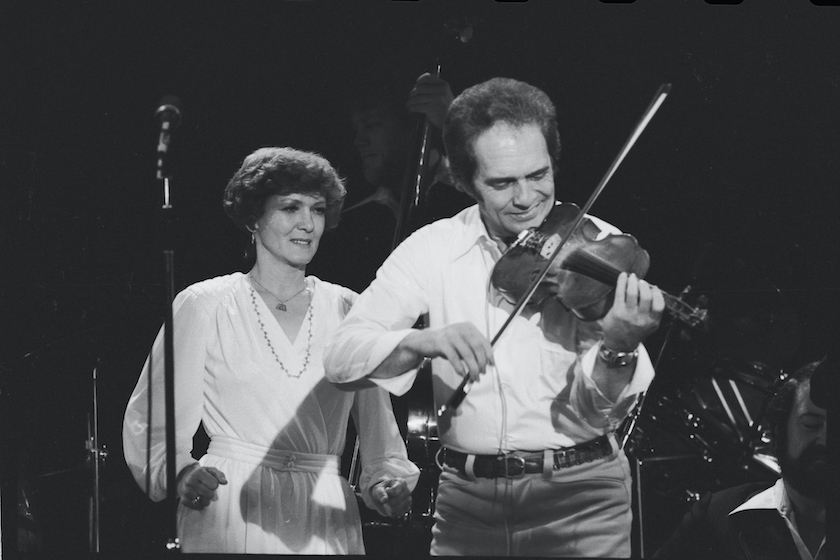
© Roger Ressmeyer/CORBIS/VCG via Getty Images
Haggard-Owens harmonies set the Hag's stage show apart for years beyond their divorce. Per Owens' Los Angeles Times obituary from 2006, she had toured with Haggard as recently as 2000.
Owens' forgiving spirit —she was maid of honor for Haggard's 1978 wedding to fellow country singer Leona Williams— and professional commitment to elevating her ex-husband's performances endeared her to Spanke.
"It is oddly coincidental and interesting how Bonnie and I shared very similar lives," Spanke shared. "We both pursued our own solo music careers while we were also backup singers for our mates. Bonnie and I would talk about our experiences and our challenges of how hard that could be at times. Our mates did not always want to share the limelight, and that could cause problems. But in spite of that, we both knew that we had to keep doing it because we loved singing so much. In fact, we both loved it so much that we still sang backup with our mates even after we were divorced from them."
Born Bonnie Campbell on Oct. 1, 1929 in Blanchard, Okla., Owens' musical involvement stretched back to the 1940s, when she was bandmates in Arizona with her husband from 1948- 1953, Buck Owens. Bonnie and Buck moved to California in 1951, positioning both to play pivotal roles in the development and spread of the Bakersfield Sound.
A recording career that began in 1953 with a version of "A Dear John Letter" featuring duet partner Fuzzy Owen hit its stride in the early 1960s with a trio of Top 40 country hits for Capitol Records: "Why Don't Daddy Live Here Anymore," "Don't Take Advantage of Me" and Haggard collaboration "Just Between the Two of Us." In fact, Haggard did not eclipse Owens' success until after they wed and she assumed an unselfish role in his swift ascent as a generational talent.
"When they did their first and only duet record together, Just Between the Two of Us, she was a much bigger star [than Haggard]," Cantwell said. "She had already won Female Artist of the Year [in 1965] from the Academy of Country Music Awards. Buck won [Male Artist of the Year]. She had been around for a long time. She was the pro. She was the one who had a local following and had made records."
To further compare Owens and Haggard's career trajectories, Haggard won Male Artist of the Year at the 1966 ACM Awards. This elevated him, at least in the eyes of the Academy --which at the time focused on artists from western states, unlike the Nashville-centric Country Music Association-- to the level of its inaugural Male and Female Artists of the Year, Buck and Bonnie. In 1971, Haggard and his supporting cast reached the top of the heap when he became the ACM Awards' first-ever Entertainer of the Year.
Owens died on April 24, 2006 at age 76 after a lengthy battle with Alzheimer's disease.
READ MORE: Country Music's Diversity Problem Goes Beyond the Stage. This Program Seeks a Solution
